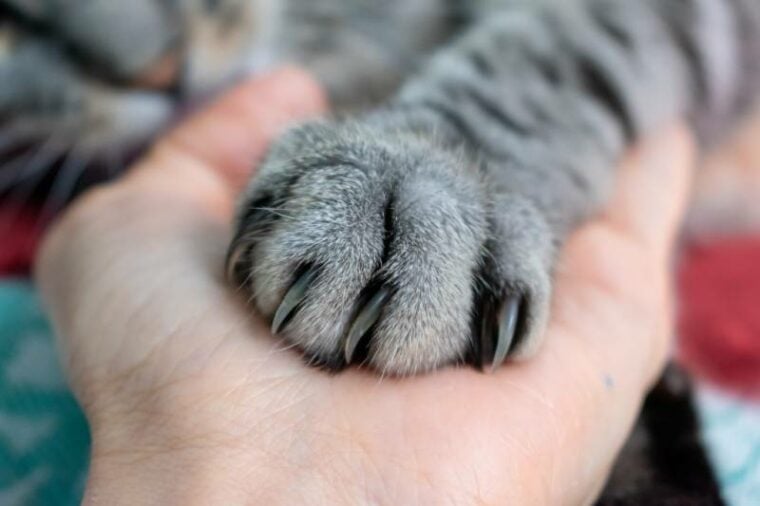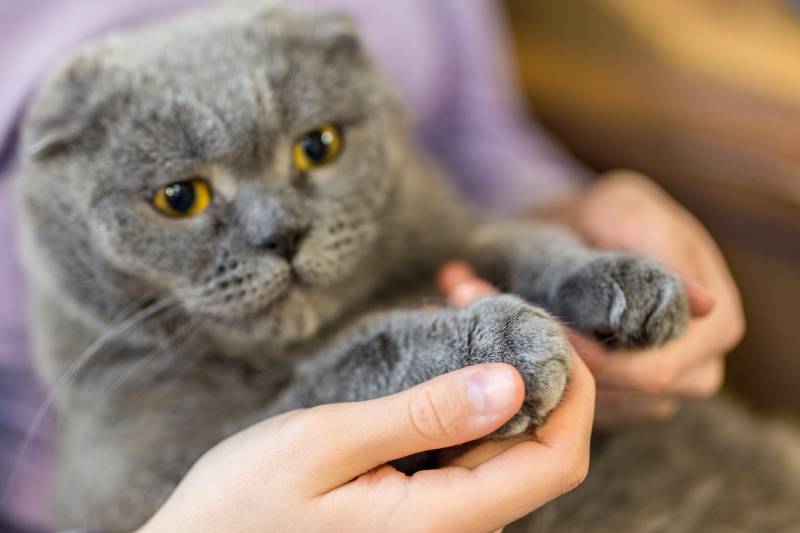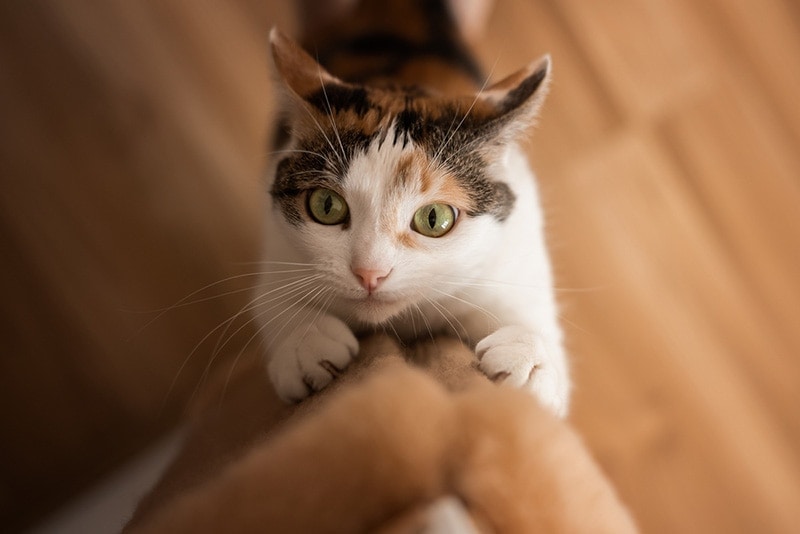
Click to Skip Ahead
Declawing cats, or onychectomy, is a procedure that involves the surgical removal of a cat’s claws. Some cat owners elect for the procedure in order to prevent their cats from damaging their furniture, curtains, and other parts of their homes. However, since the process requires more than simply removing the claws, it is increasingly unpopular, causing many people to wonder if it is illegal.
The short answer is that while it’s not illegal across the entire country, many states and municipalities have laws against declawing cats. Keep reading as we discuss where it is an illegal practice. We also list healthy alternatives to declawing.
When Did the Declawing Practice Get Started?
Declawing cats dates back to ancient civilizations, with evidence suggesting that ancient Egyptians may have been among the first to perform such a procedure. Back then, Egyptians valued cats for their hunting abilities, and they thought declawing was a practical way to prevent them from damaging furniture and possessions while preserving their hunting prowess.
In the mid-20th century, declawing gained popularity in the United States to safeguard indoor environments and prevent scratches on household items. However, attitudes changed as more pet owners became aware of animal rights and welfare.

What Is Cat Declawing?
Declawing is a complex cosmetic procedure involving amputating a cat’s third phalanx, equivalent to amputating a human’s finger at the last joint. The process can cause physical pain and potential long-term consequences, such as altered gait and behavioral changes, possibly affecting your pet’s well-being.
Cats rely on their claws for various natural behaviors, including stretching, climbing, and scratching to mark their territory. Declawing inhibits these behaviors, potentially leading to physical and psychological distress. Furthermore, declawed cats lose a crucial defense mechanism, rendering them more vulnerable.
The Legal Status of Declawing Cats
Global Status
The legality of declawing cats varies significantly worldwide. Some countries and regions have taken a strong stance against the practice due to its ethical concerns, while others have limited or no regulations. You cannot declaw cats in Australia, Belgium, Bulgaria, Finland, France, Germany, Greece, Italy, Sweden, Switzerland, Turkey, and Ukraine, among others. Canada also prevents the declawing of cats in seven out of 10 provinces.

American Status
While declawing was once quite common in the U.S., its popularity has declined since West Hollywood banned it in 2003, and several other California cities adopted the ban soon after, including Berkeley, Beverly Hills, Burbank, Culver City, Los Angeles, San Francisco, and Santa Monica. Since then, New York has passed legislation to ban declawing throughout the entire state, and several other states are working on passing the legislation, including New Jersey, Massachusetts, West Virginia, and Florida.
Several other cities and municipalities across the United States also ban it, including Austin, Denver, Pittsburgh, Allentown, and Madison. The entire county of St. Louis bans it, including the city.
The laws are continuously changing as more people become aware of the problems with declawing, so it’s likely to become illegal in more places. Some veterinarians may also refuse to declaw a cat even if it is still legal in their area.
Alternatives to Declawing
Scratching Posts
Commercial scratching posts are ideal for preventing your cat from damaging your belongings while enabling them to stretch and scratch normally. Place several around your home, and if you see your cat scratching at the furniture, guide them over to the scratching post. This will teach them the proper behavior, and you can even give them a treat when they catch on, to positively reinforce the behavior and encourage them to repeat it. Adding catnip to the posts can also help attract your cats.

Scratching Pads
Scratching pads are similar to scratching posts but lay flat on the ground. These are usually less expensive and some cats prefer them. The downside is that they are often cardboard and can make a mess as your cat scratches them.
Interactive Toys
Sometimes, cats scratch because they are bored. Playing with them using an interactive toy like a laser light can help them burn off excess energy, making them less likely to scratch up your belongings. These toys also enable you to form a stronger bond with your cat as you play together.

Nail Trimming
Trimming your cat’s nails with a cat-specific nail clipper can help reduce the amount of scratching that your pet does and the damage that results from it. You can visit a professional groomer if you don’t know how to trim your cat’s nails.
Nail Caps
Nail caps are options available to owners of destructive cats. These caps go over your cat’s claws so they can’t do any damage. They are non-toxic and fall off naturally when the cat sheds their nails.
Summary
Declawing is illegal in several cities in the United States and many places worldwide. Many states also have legislation in the works to ban it, including Florida and New Jersey. Since this legislation is reacting to more people becoming aware of the problems with declawing, it’s likely to become illegal in many more places in the coming years. It’s also likely that some veterinarians will refuse to do the procedure or will try to convince you to change your mind in areas where it’s legal.
Training your cat to use a scratching post or pad using positive reinforcement can be effective at helping your cat stop scratching your walls or furniture. Interactive toys can also help tire them out and prevent boredom, and trimming the nails might reduce their urge to scratch and make the nails less destructive.
- See also: 9 Snakes That Don’t Eat Mice Or Rodents
Featured Image Credit: Kunitsa Yana, Shutterstock






